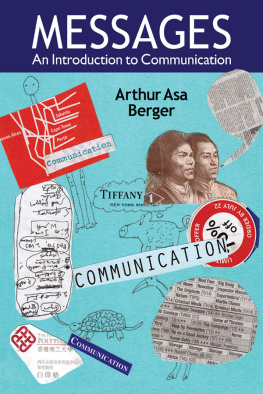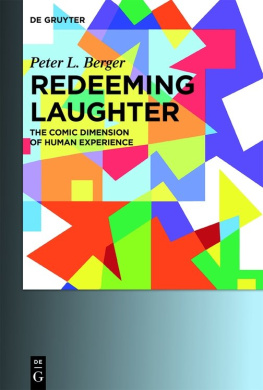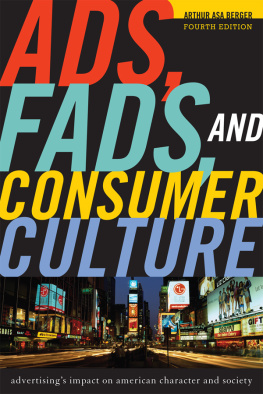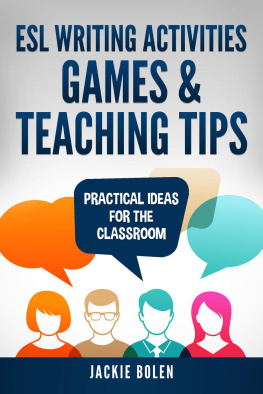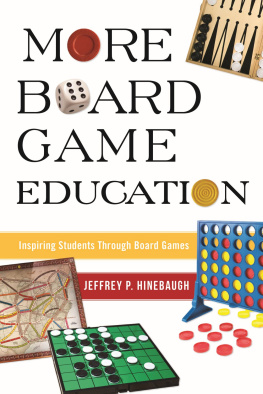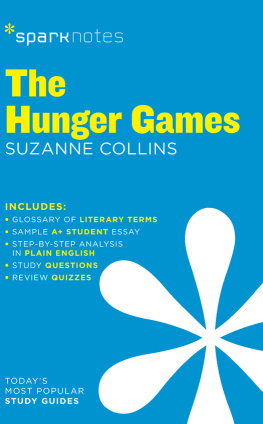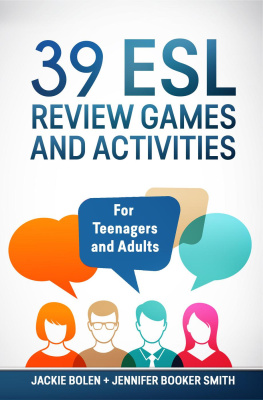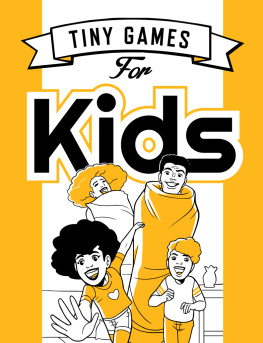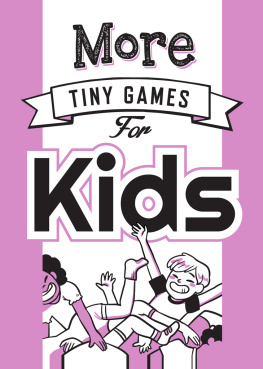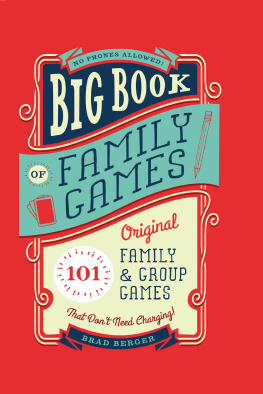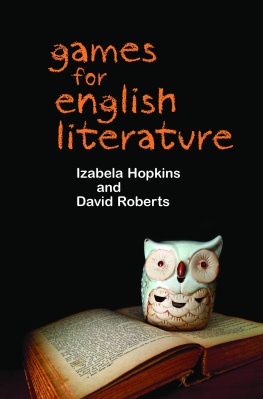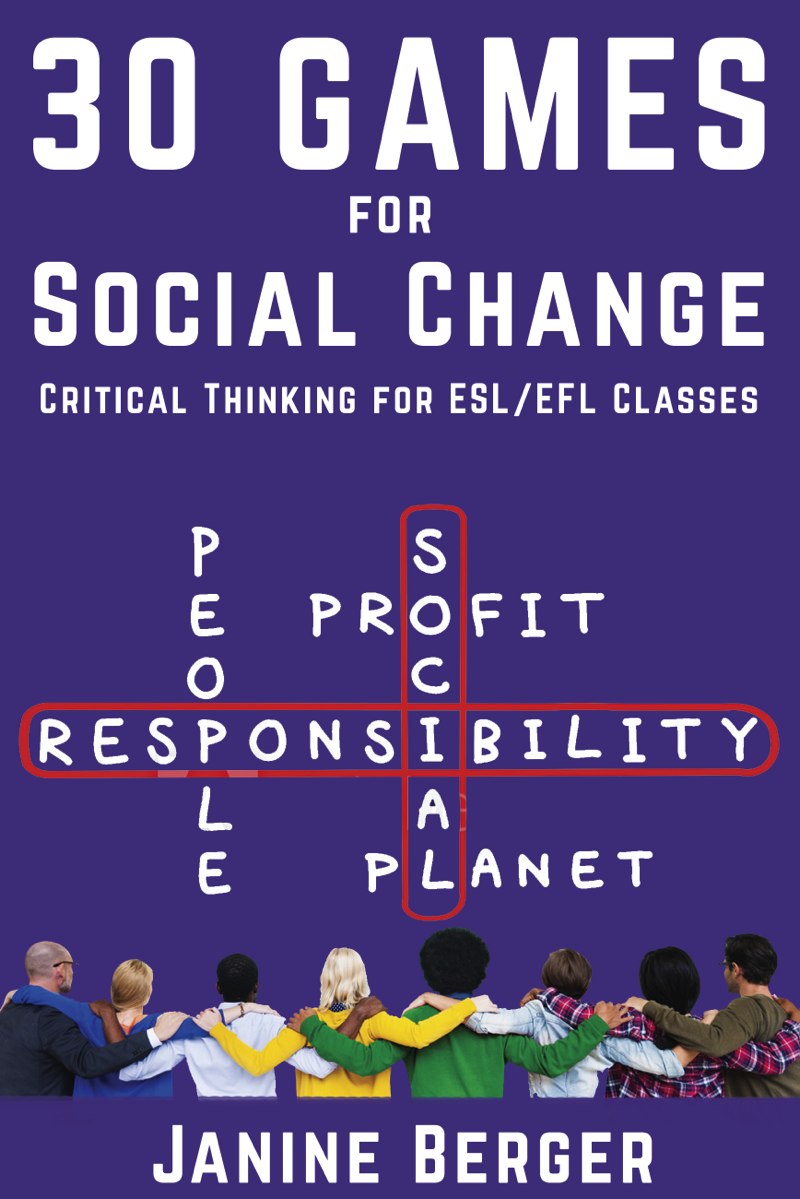Introduction
T he games in this book are designed to help learners use English in a manner that is interactive, autonomous, and purpose-driven.
Games
Here are some definitions from top experts in game design:
- "A game is a system in which players engage in an artificial conflict, defined by rules, that results in a quantifiable outcome." (Salen & Zimmerman, 2004)
- A game is a form of art in which participants, termed players, make decisions in order to manage resources through game tokens in the pursuit of a goal. (Costikyan, 1994 )
- To play a game is to engage in activity directed toward bringing about a specic state of affairs, using only means permitted by specic rules, where the means permitted by the rules are more limited in scope than they would be in the absence of the rules, and where the sole reason for accepting such limitation is to make possible such activity. (Suits, 1978)
- When you strip away the genre differences and the technological complexities, all games share four defining traits: a goal, rules, a feedback system, and voluntary participation. (McGonigal, 2012)
When students play the games in this book, they will use English in a manner that is authentic within the game world. They have to make choices during the game, and therefore determine which language skills to use in order to carry out their decisions.
The teacher is a guide during the games, ready to step in to assist with communication. The teacher may choose to note any difficulties students experience, and review these areas at a later time.
Serious Games
Serious games have a purpose beyond mere entertainment. Although a game should be fun, it can also educate. Ian Bogost calls this procedural rhetoric, meaning that [t]he art of persuasion through rule-based representations and interactions, rather than the spoken word, writing, images, or moving pictures (Bogost, 2007).
Many serious game designers, such as those at Games for Change (gamesforchange.org), Persuasive Games (persuasivegames.com), and Tiltfactor (tiltfactor.org), believe that games are a unique art form allowing us to understand new ideas by experiencing them interactively. (Students might even enjoy being assigned to play the games on these websites as homework!)
Organization of the Book
There are two main sections in this book.
1. Introductory games
The introductory games encourage students to find deeper connections with each other. Students need to spend a lot of time practicing the language, working and speaking in pairs or small groups. These activities can be more enjoyable when the students feel that they know each other personally. This is particularly important if they see each other only during their English classes, for example, in a language institute or a university, where they may not have other classes together.
The introductory games are designed to build cohesiveness in a class. These games involve exploring likes and dislikes, past experiences and dreams for the future, and ethics and values.
The teacher should encourage each student to participate. However, some students need to be reassured that they do not have to share anything they might feel uncomfortable discussing. As always, the teacher must exercise caution and show sensitivity to students backgrounds and experiences. Above all, the teacher should strive to make the classroom a place of joy and peace.
2. Games to promote critical and creative thinking about the world
The games in this section focus on world issues of great importance and current relevance.
Although some games focus on cultures and contexts that may be distant from the students everyday reality, this does not diminish their importance as topics for reflection and discussion.
Each game promotes what the Partnership for 21st Century Learning refers to as the 4 Cs: Creativity, Communication, Collaboration and Critical thinking. The students must work together, analyzing the situations in the game in order to create solutions. They must then test these solutions in order to evaluate their choices critically.
Organization of each game
Each game section is divided into the following parts:
Purpose of the game
This section provides a short explanation of the educational value of the game
Game objective
This section gives a brief explanation of the learning objective for the game, apart from the objective of learning the English language itself.
End point of the game
Some games conclude when one team or player has won. Others require every player to achieve a particular goal.
Type of game
There is a wide variety of game-types in this book, including card games, board games, physical games, and discussion games.
Number of Players
Most games allow for an unlimited number of players, however, some require players to play individually, in pairs, or in small groups.
Level/age of players
Most of the games in this book have been designed explicitly for teenagers and adults due to the subject matter. Players should ideally have at least an intermediate level of English in order to facilitate communication.
Preparation time
Some of the game resources, such as cards and boards, are provided here for the teacher to print. However, in most cases, only an example is provided so that students may design their own boards and cards and other necessary materials. Materials preparation is a vital experience in which the students consider the issues presented by the game and prepare themselves linguistically for the challenges ahead.
Playing time
Most games will take approximately one class period to play; each game includes introductory and follow up activities.
Materials and space
Most of the games require no more than the basic furniture and materials found in a classroom, though some might require space for physical movement as well.
Instructions
Each game comes with complete instructions, including how to introduce the game (the before the game section), how to play the game (marked under the game) and a section with follow-up tasks in speaking and writing.
Important Note
The games in this book are meant to entertain and educate. However, some of the games in this book deal with issues that may be sensitive for certain students. Each teacher knows their students best and so can decide which games to skip or modify so that all the students feel comfortable and enjoy the lesson.
A bout pronouns in this book : We use the pronoun they as a singular pronoun, referring to people of any gender. This avoids the awkward and inaccurate he or she, him or her dichotomy.




